40 parts of a microscope worksheet answers
Banana DNA Extraction | Ask A Biologist 19.04.2016 · These instructions are in segments of DNA called genes. Genes, along with other parts of our DNA that turn genes on and off, hold information for how our body develops and functions. They produce molecules called proteins that do most of the work in the body. Variants of genes, called alleles, are responsible for differences in hair color, eye color, and earlobe … The wacky history of cell theory - Lauren Royal ... - YouTube View full lesson: discovery isn't as simple as one good experiment. The weird and wonder...
Parts of a microscope with functions and labeled diagram 24.12.2021 · Optical parts of a microscope and their functions. The optical parts of the microscope are used to view, magnify, and produce an image from a specimen placed on a slide. These parts include: Eyepiece – also known as the ocular. this is the part used to look through the microscope. Its found at the top of the microscope. Its standard magnification is …
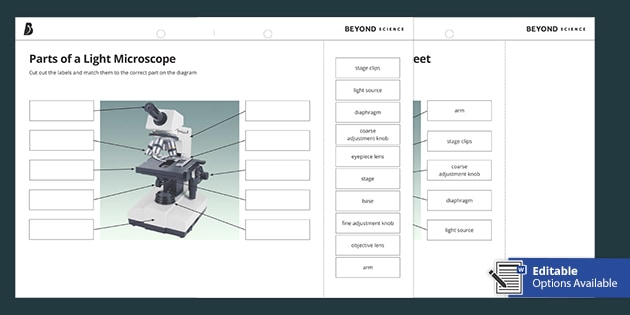
Parts of a microscope worksheet answers
Parts of the Light Microscope - Science Spot B. NOSEPIECE microscope when carried Holds the HIGH- and LOW- power objective LENSES; can be rotated to change MAGNIFICATION. Power = 10 x 4 = 40 Power = 10 x 10 = 100 Power = 10 x 40 = 400 What happens as the power of magnification increases? Parts of Stereo Microscope (Dissecting microscope ... Optical parts of a stereo microscope work together to magnify and produce a 3-D image of the specimens. These parts include: Eyepieces. The eyepiece (or ocular lens) is the lens part at the top of a microscope that the viewer looks through. Typically, standard eyepieces for a dissecting microscope have a magnifying power of 10x. Optional eyepieces of varying … Bunsen Burner: Parts, Function & Diagram - Study.com 22.09.2021 · Bunsen Basics. If you've ever taken a science class in high school or college, you've likely worked with a Bunsen burner. Using a Bunsen burner can be one of …
Parts of a microscope worksheet answers. CELLS alive! Since 1994, CELLS alive! has provided students with a learning resource for cell biology, microbiology, immunology, and microscopy through the use of mobile-friendly interactive animations, video, puzzles, quizzes and study aids. Section 4 - Microscopes - Oxford School District Study the diagram of the microscope below. You will later be asked to correctly label each ... Answer the following questions on a separate sheet of paper.5 pages Banana DNA Extraction - Activity - Ask a Biologist with other parts of our DNA that turn genes on and off, hold information for how our body develops and functions. They produce molecules called proteins that do most of the work in the body. Variants of genes, called alleles, are responsible for differences in hair color, eye color, and earlobe shape. All of these instructions fit within tiny packages within our tiny cells, so that is all … Key Lab: Using a Compound Light Microscope 1. Learn the parts of a compound light microscope and their functions. 2. Learn how to calculate the magnification of a compound light microscope.6 pages
Labeling a Microscope Answers.pdf 7 Sept 2015 — The objectives are attached to what part of the microscope (it can be ... page The Microscope Parts and Use The compound microscope has two systems of lenses for greater magnification, 1) the ocular, or eyepiece lens that one looks into and 2) the objective lens, or ...3 pages Lab Exercise 2 Be able to name the parts of the microscope and give the function of each part. ... Answer the parts of Question #8 with either “Increased” or “Decreased”.13 pages Parts of a Microscope Printables - Homeschool Creations How many parts of a microscope can you identify? Can you show the arm, stage, eyepiece, head, objective lens, illuminator, nosepiece, and stage clips ...6 pages
The Six Kingdoms But the use of the microscope led to the discovery of new organisms and the identification of differences in cells. A two-kingdom system was no longer useful. Today the system of classification includes six kingdoms. The Six Kingdoms: Plants, Animals, Protists, Fungi, Archaebacteria, Eubacteria. Light Microscope- Definition, Principle, Types, Parts ... 07.11.2021 · Light Microscope Free Worksheet. Answer Key . Phase Contrast Microscope. This is a type of optical microscope whereby small light deviations known as phase shifts occur during light penetration into the unstained specimen. These phase shifts are converted into the image to mean, when light passes through the opaque specimen, the phase shifts brighten the … Bunsen Burner: Parts, Function & Diagram - Study.com 22.09.2021 · Bunsen Basics. If you've ever taken a science class in high school or college, you've likely worked with a Bunsen burner. Using a Bunsen burner can be one of … Parts of Stereo Microscope (Dissecting microscope ... Optical parts of a stereo microscope work together to magnify and produce a 3-D image of the specimens. These parts include: Eyepieces. The eyepiece (or ocular lens) is the lens part at the top of a microscope that the viewer looks through. Typically, standard eyepieces for a dissecting microscope have a magnifying power of 10x. Optional eyepieces of varying …
Parts of the Light Microscope - Science Spot B. NOSEPIECE microscope when carried Holds the HIGH- and LOW- power objective LENSES; can be rotated to change MAGNIFICATION. Power = 10 x 4 = 40 Power = 10 x 10 = 100 Power = 10 x 40 = 400 What happens as the power of magnification increases?
:max_bytes(150000):strip_icc()/microscopestudy-58b978755f9b58af5c495ac7.png)

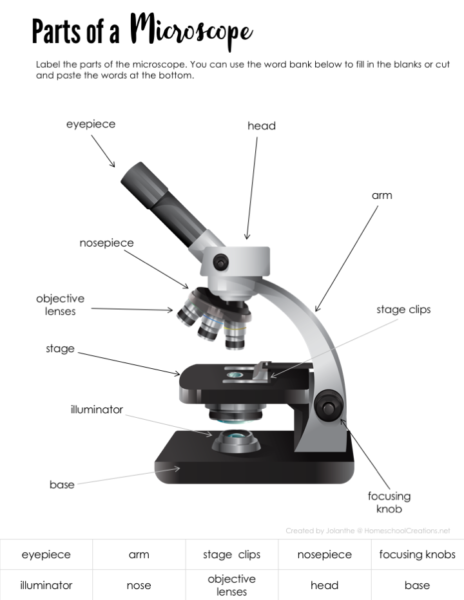
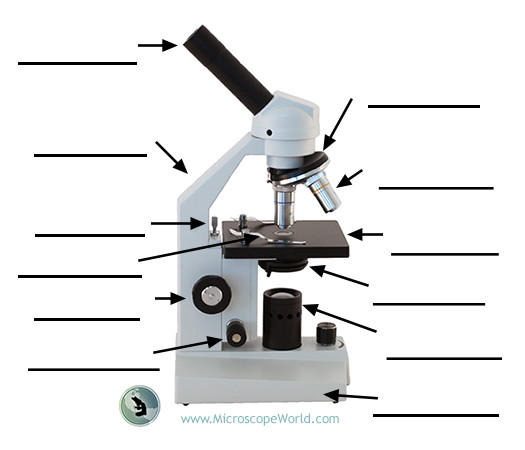

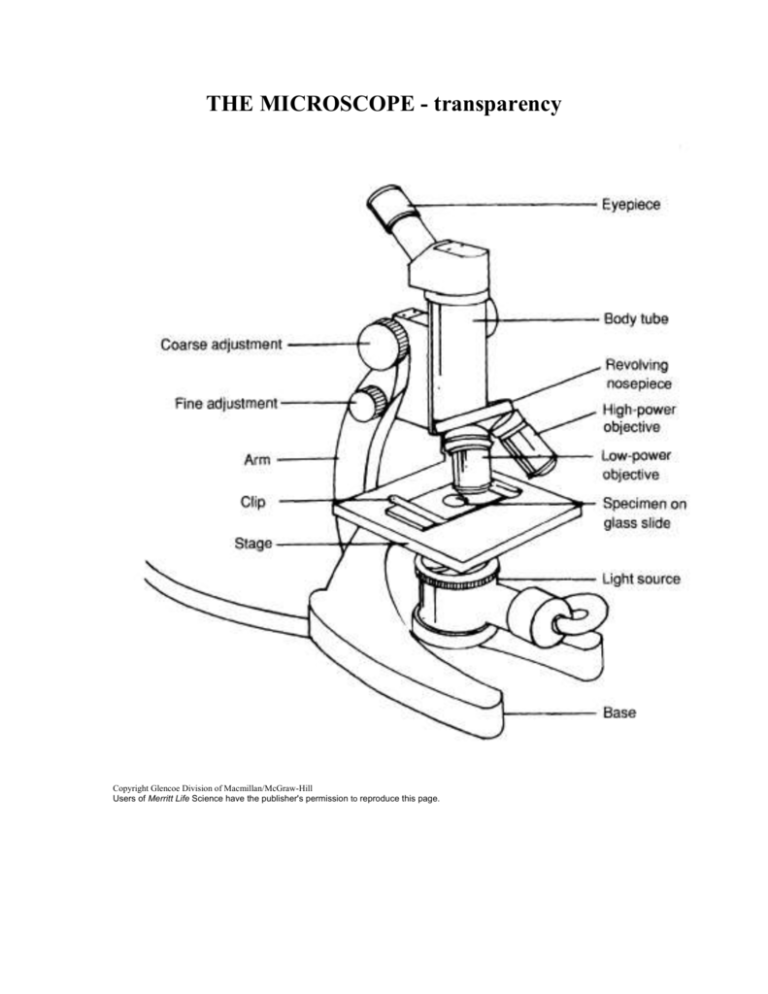

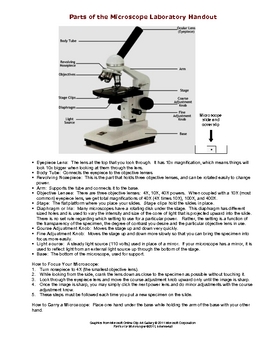

(159).jpg)

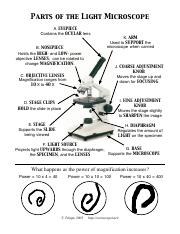










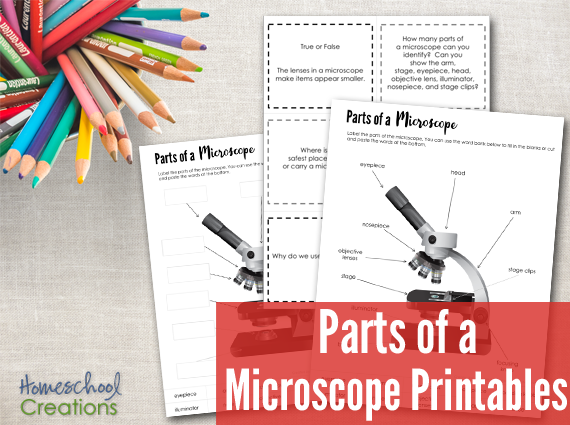

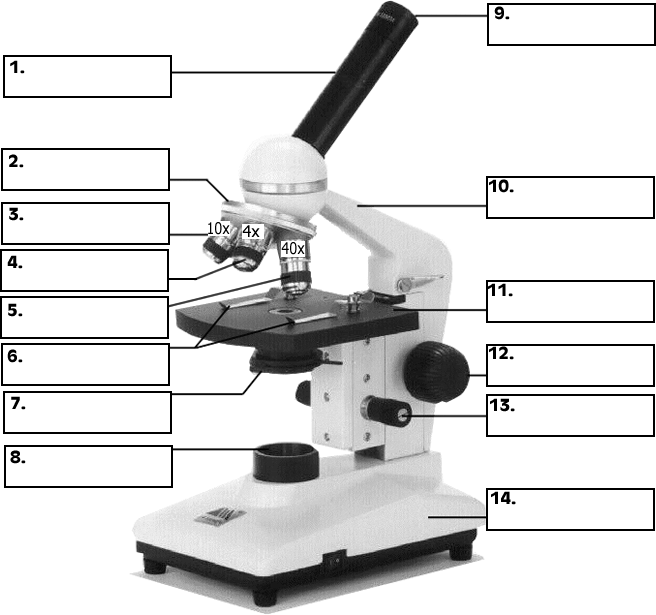


0 Response to "40 parts of a microscope worksheet answers"
Post a Comment